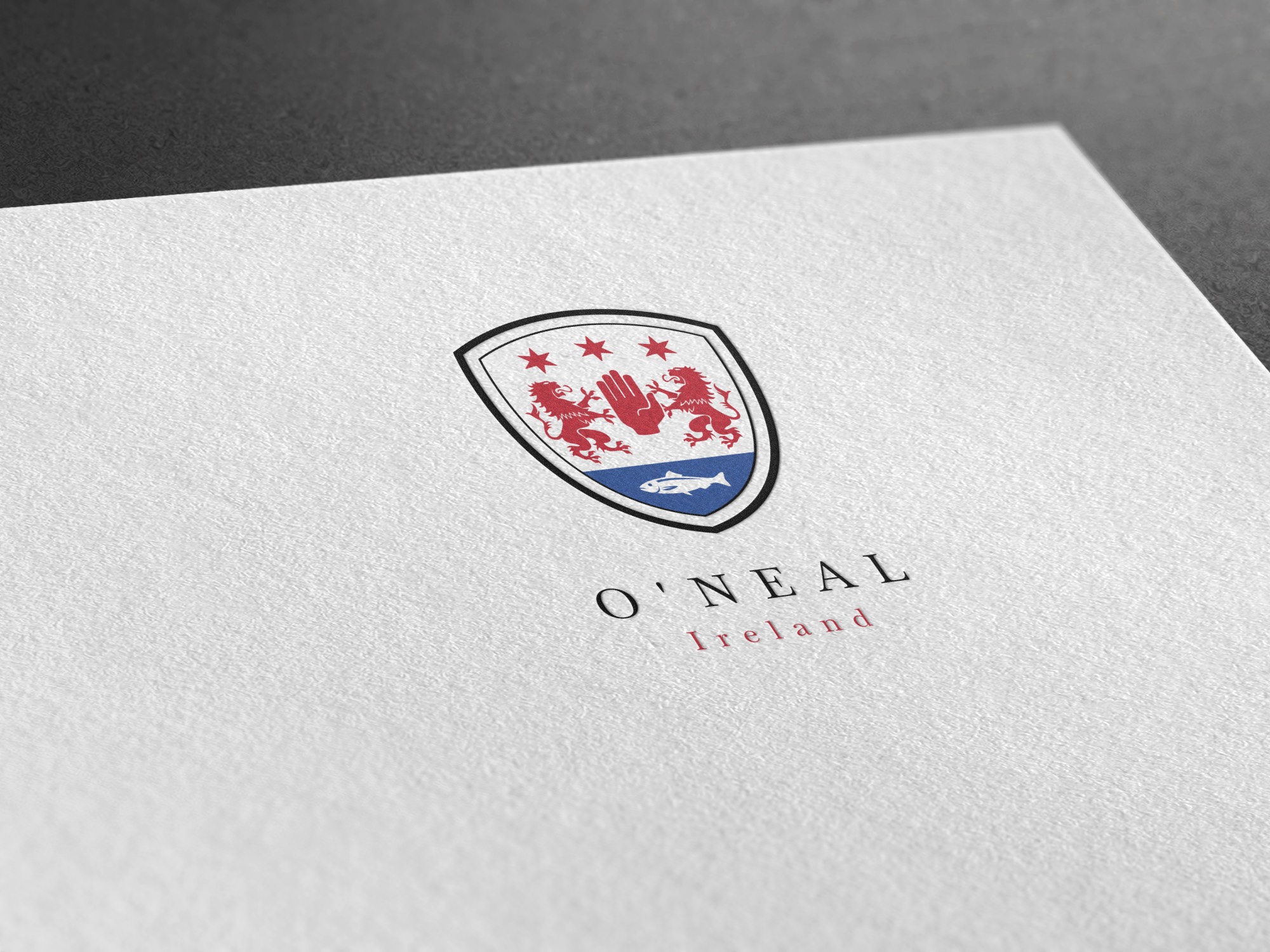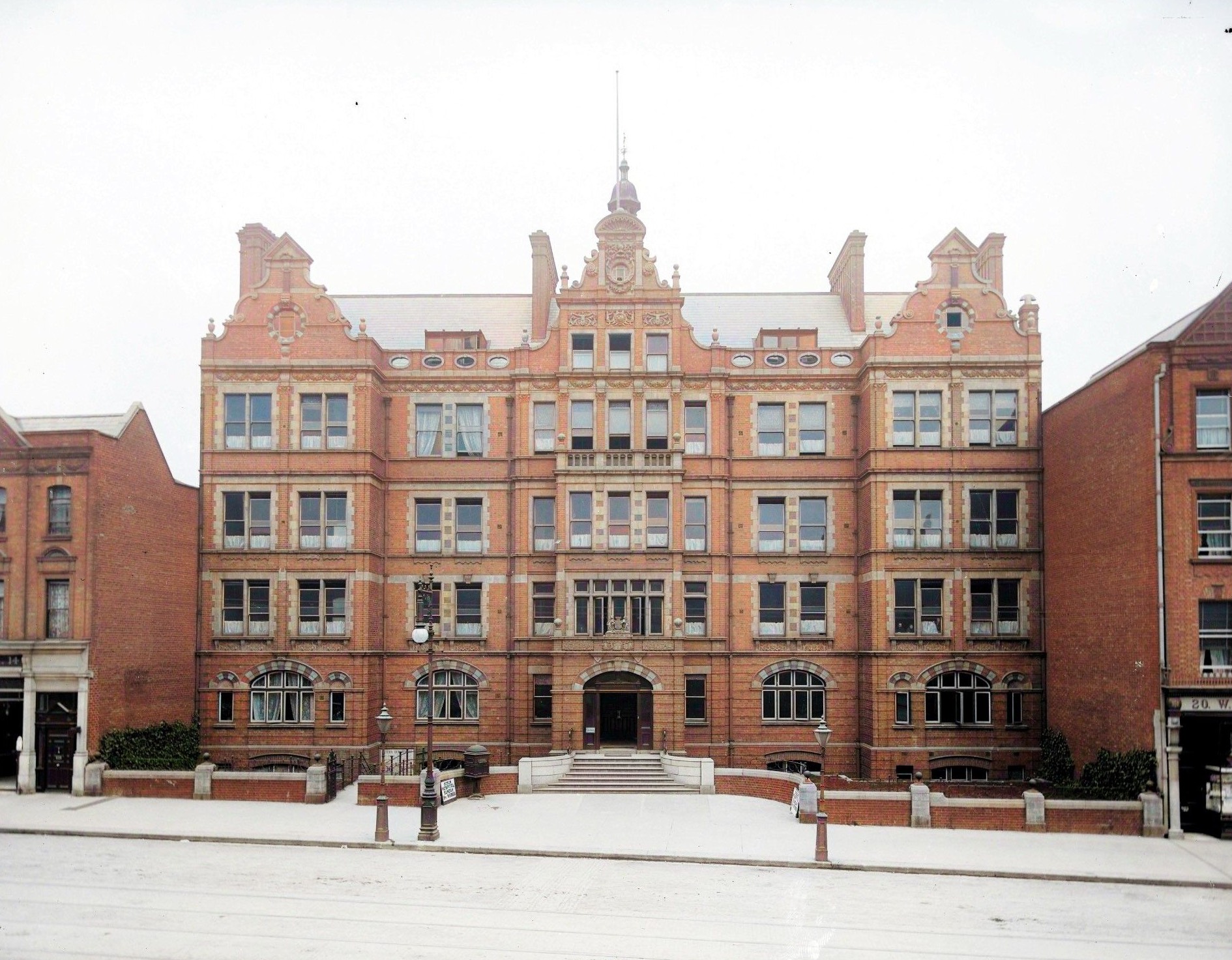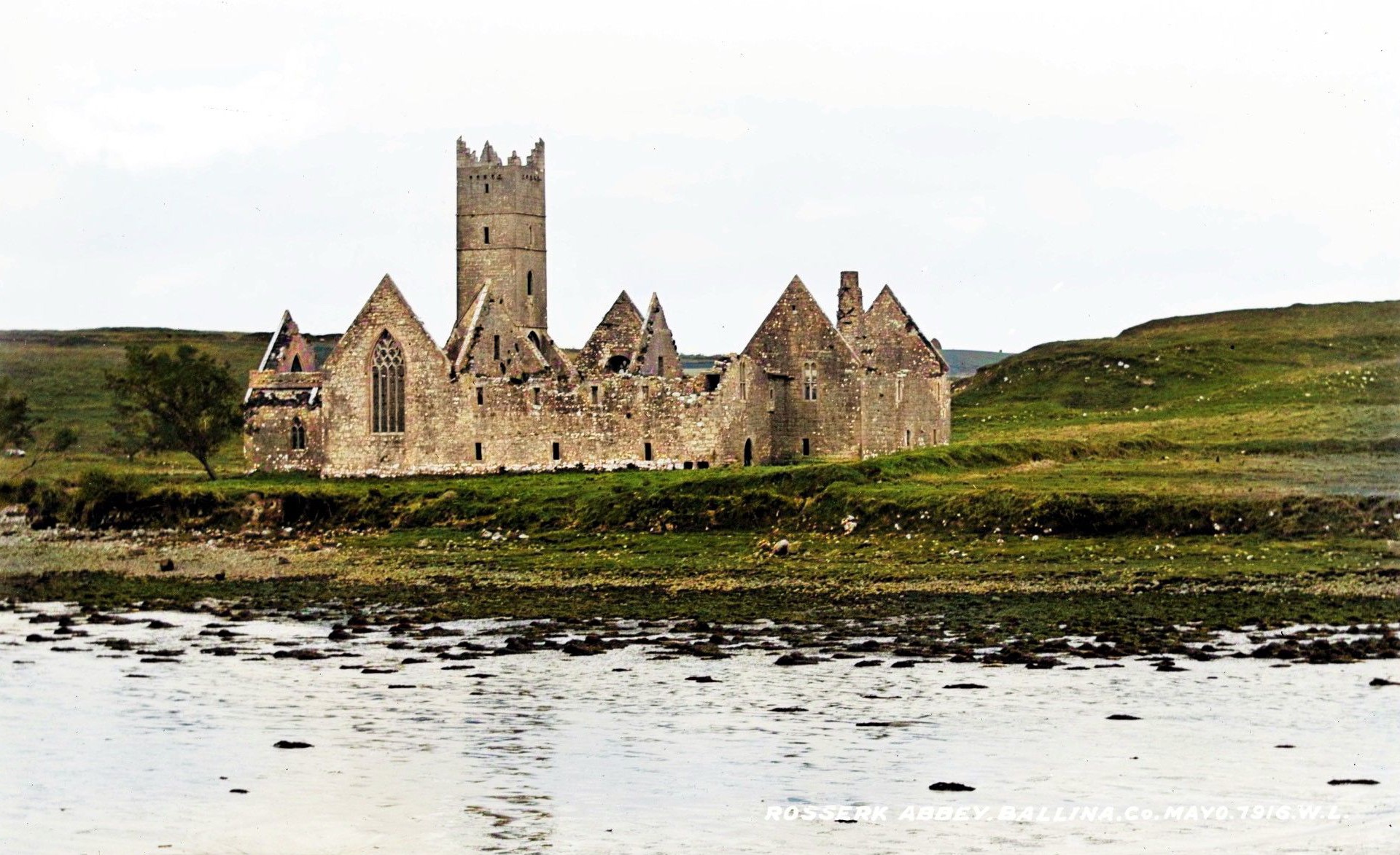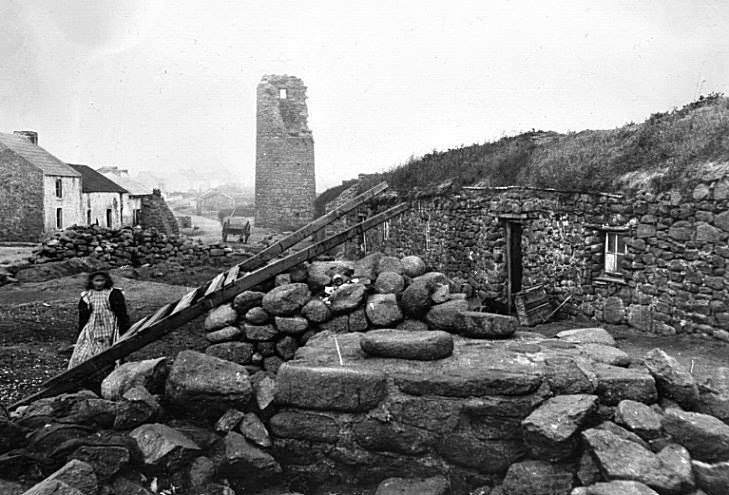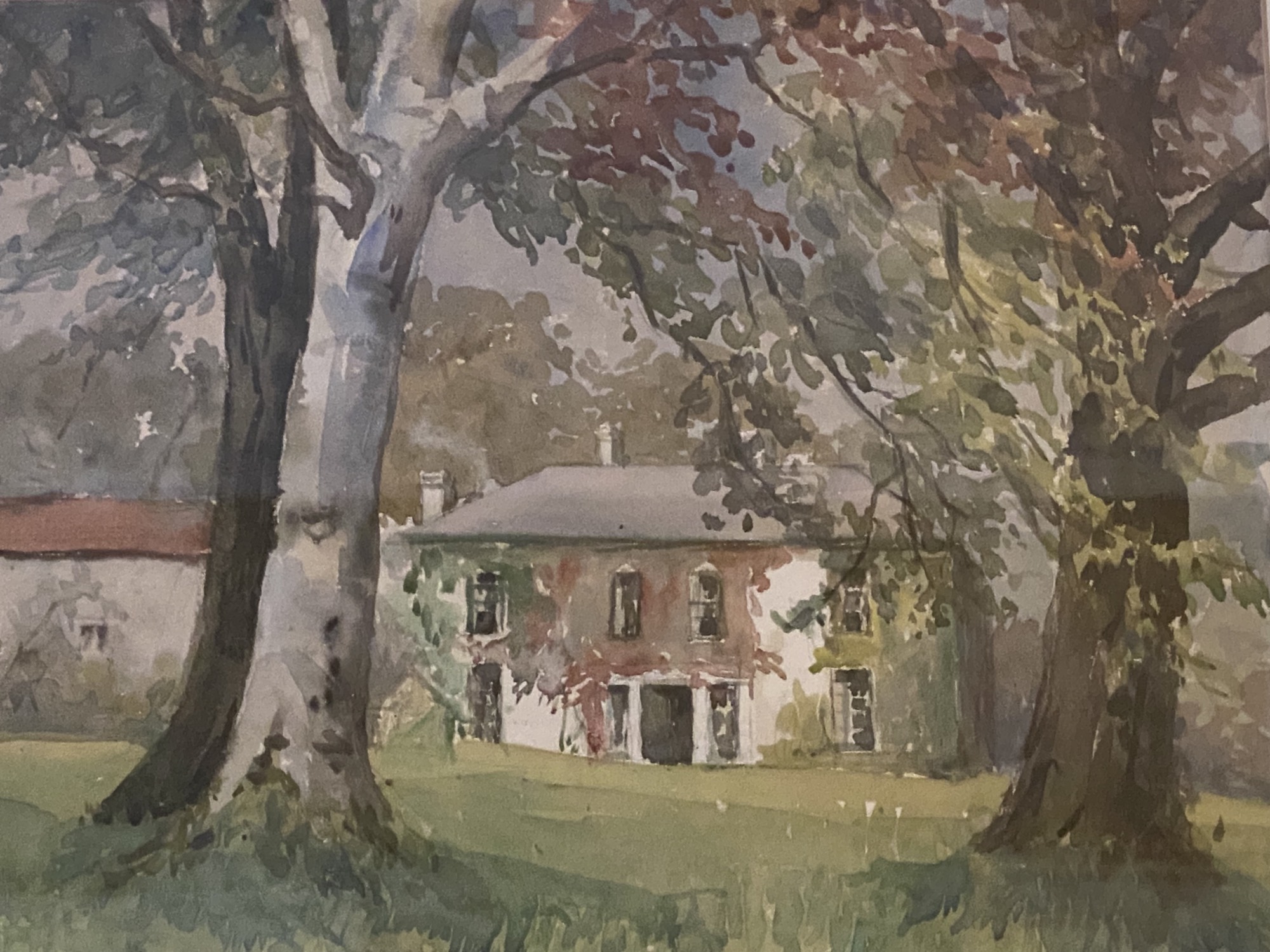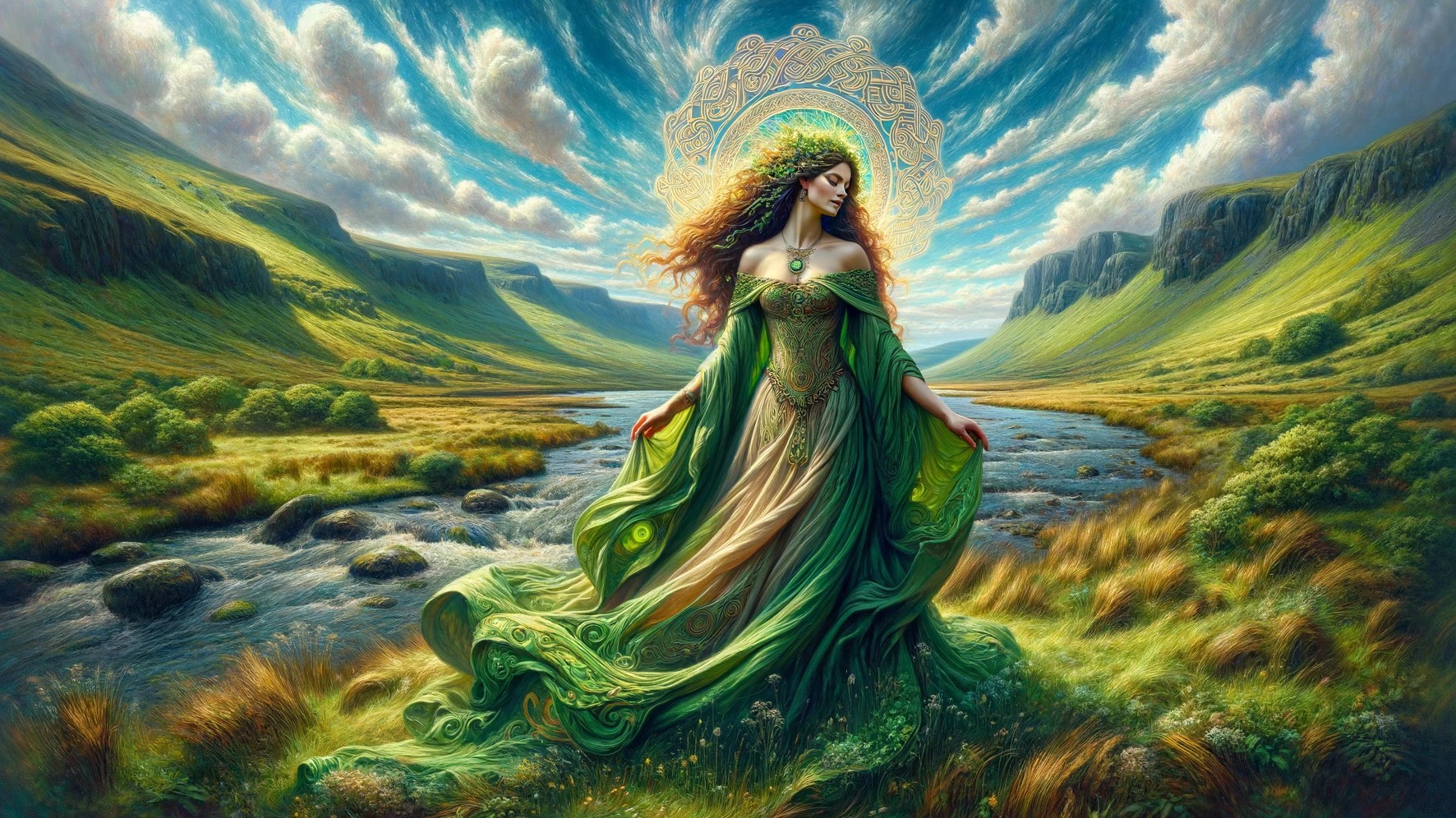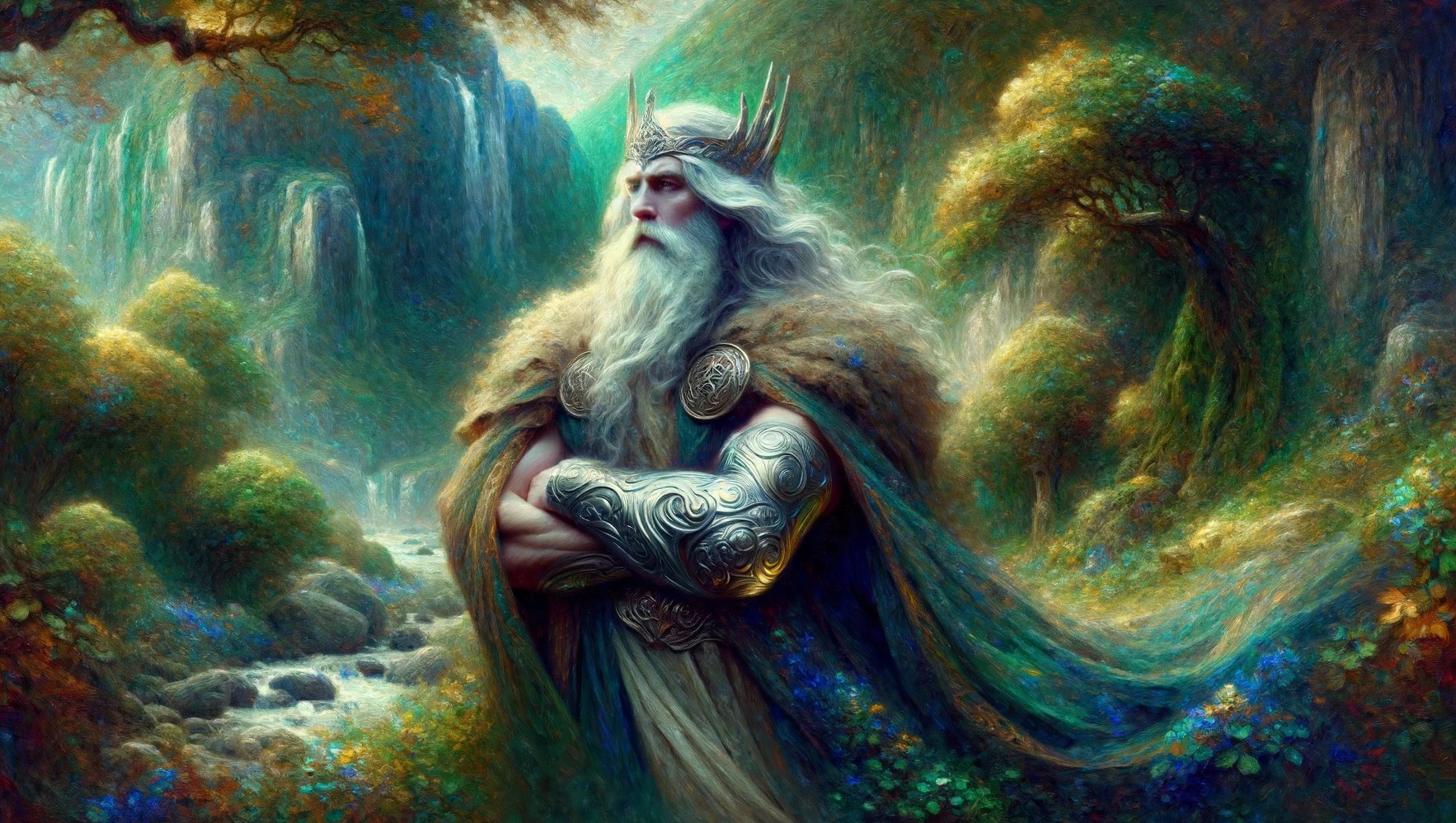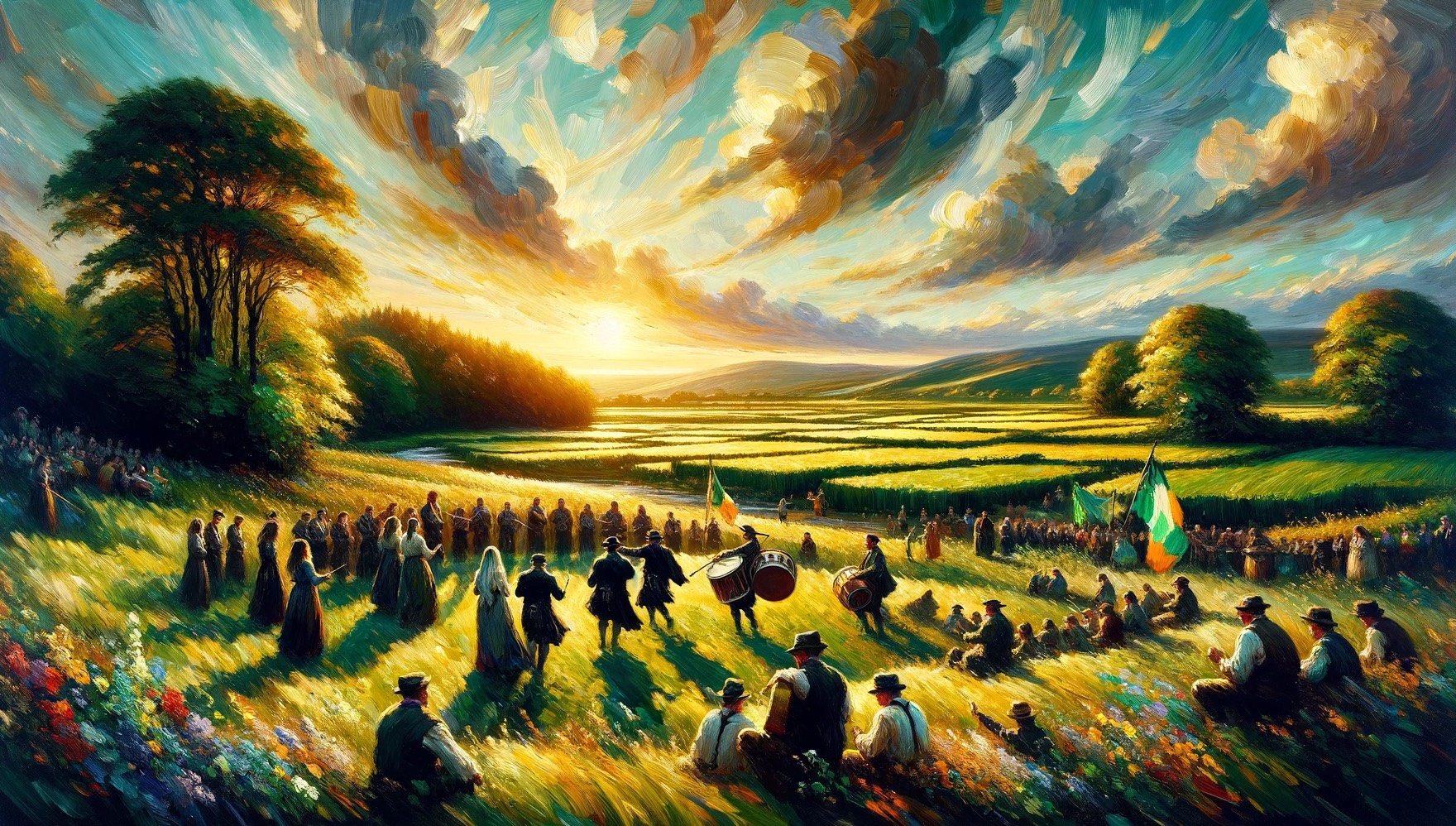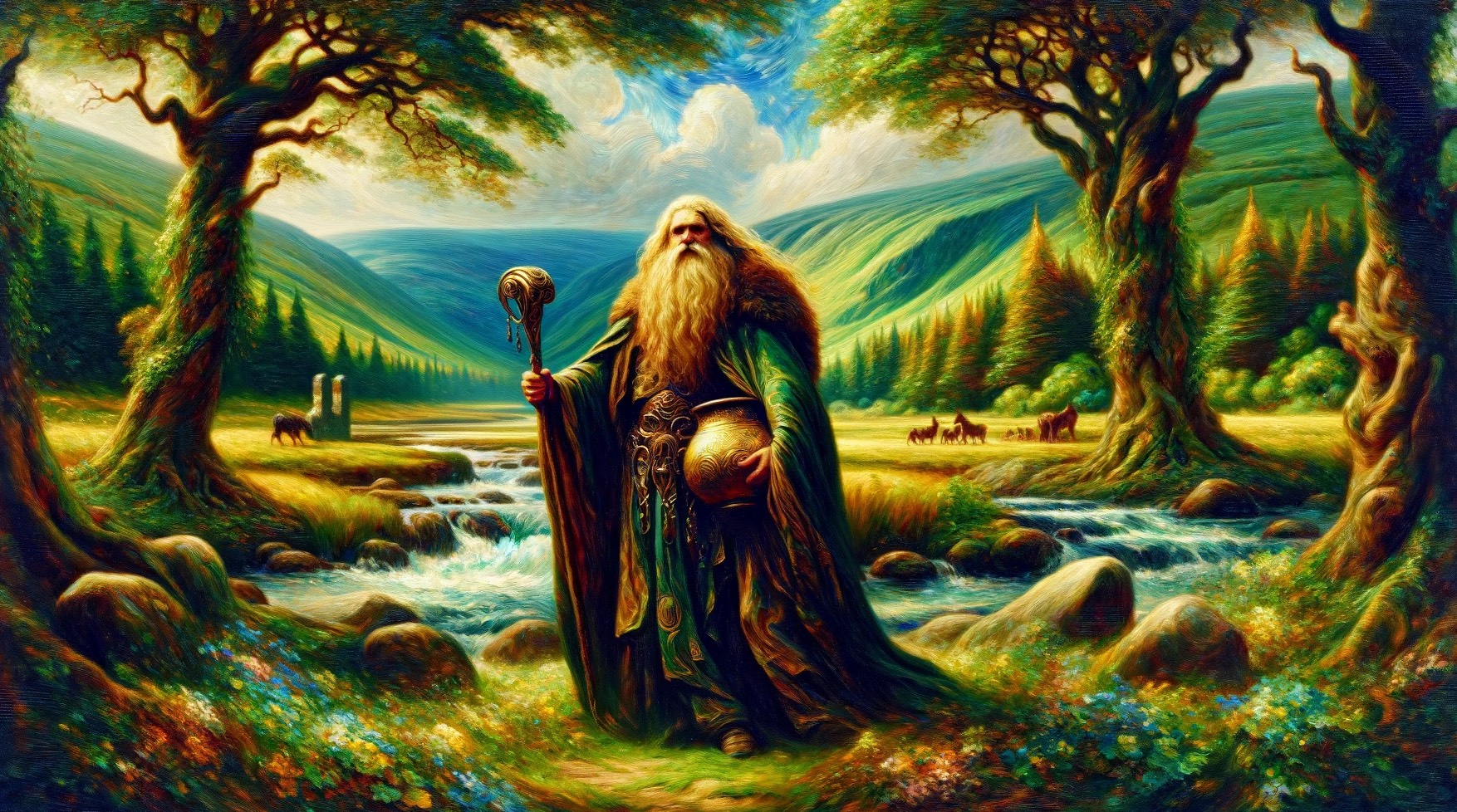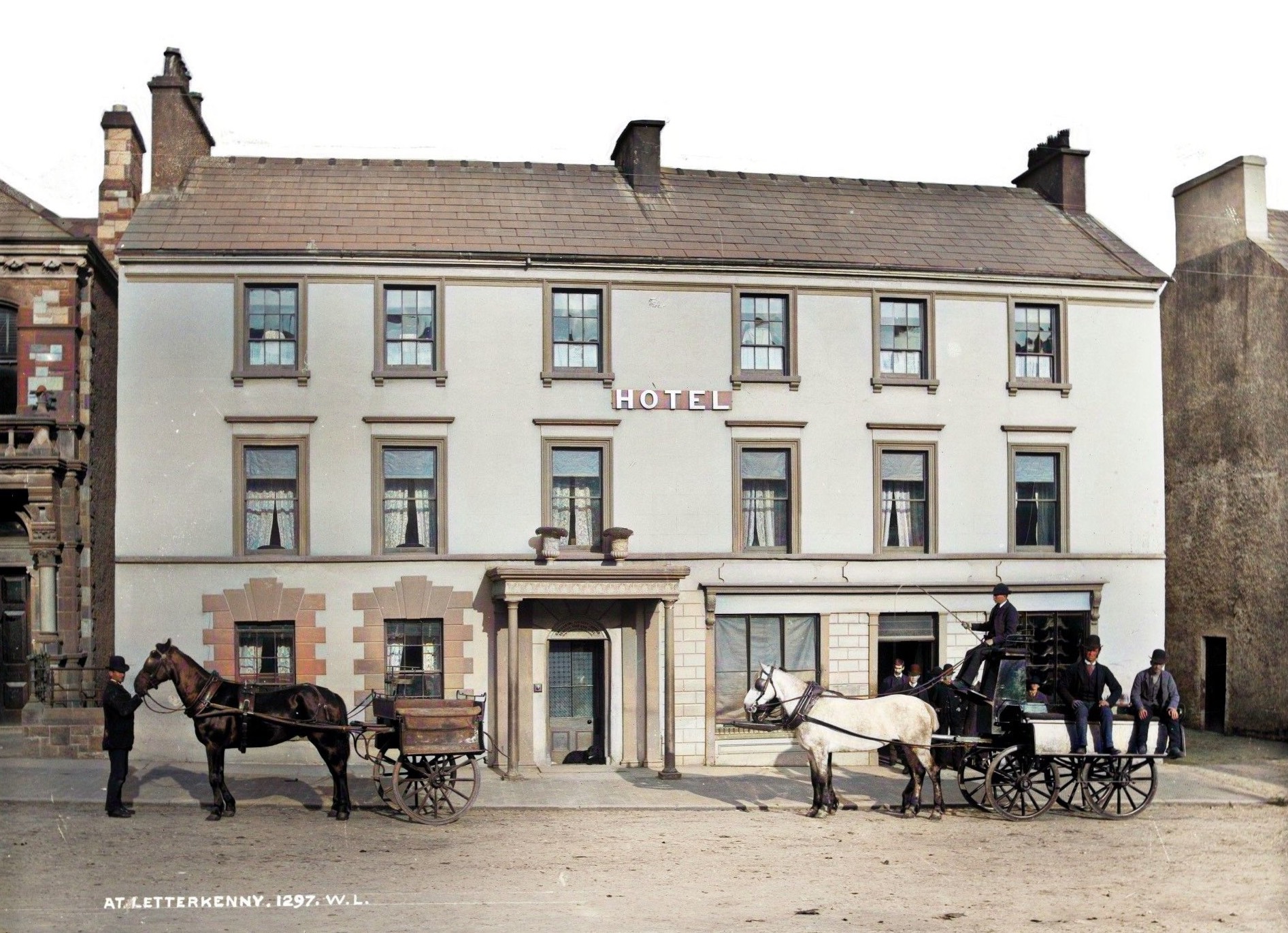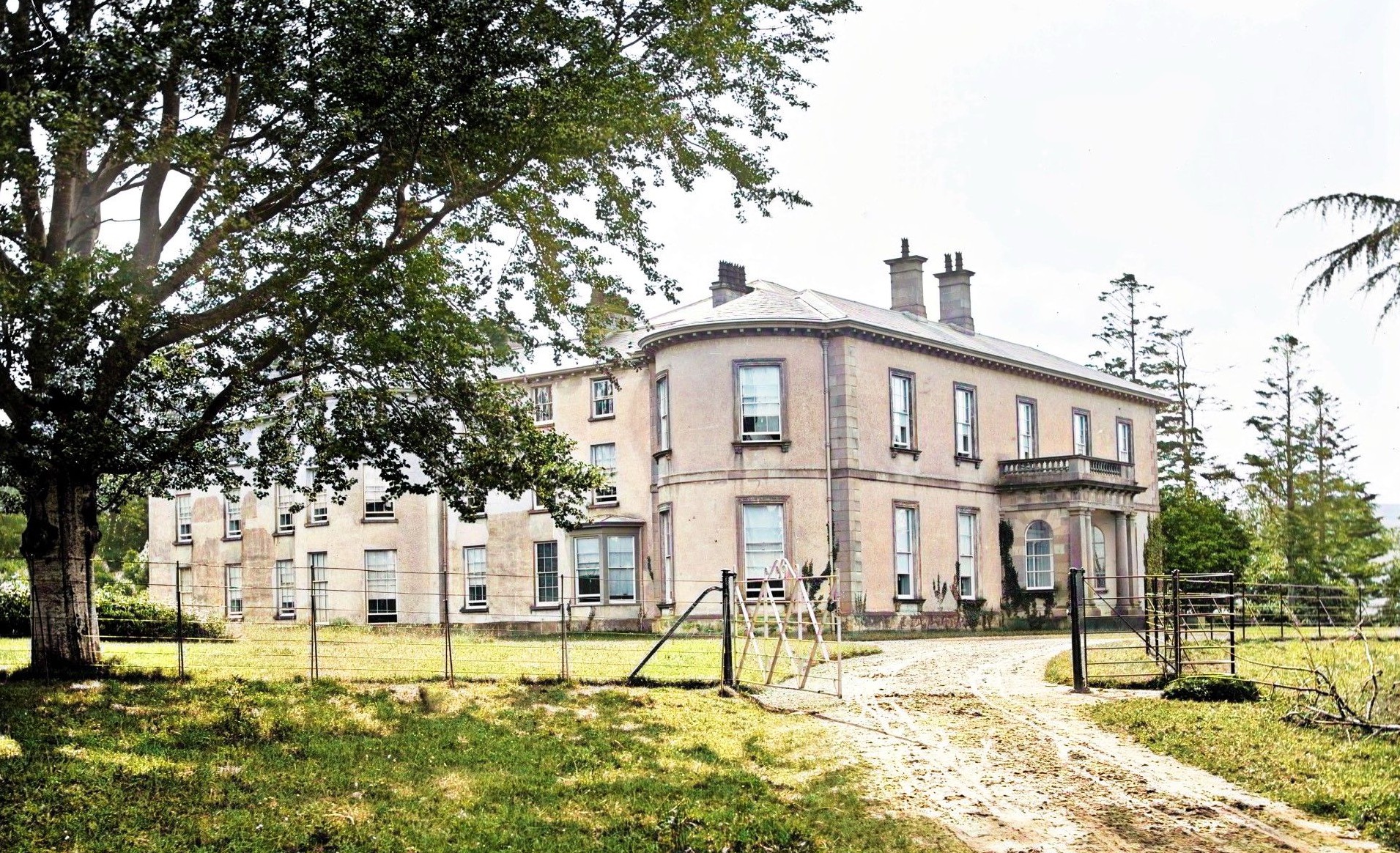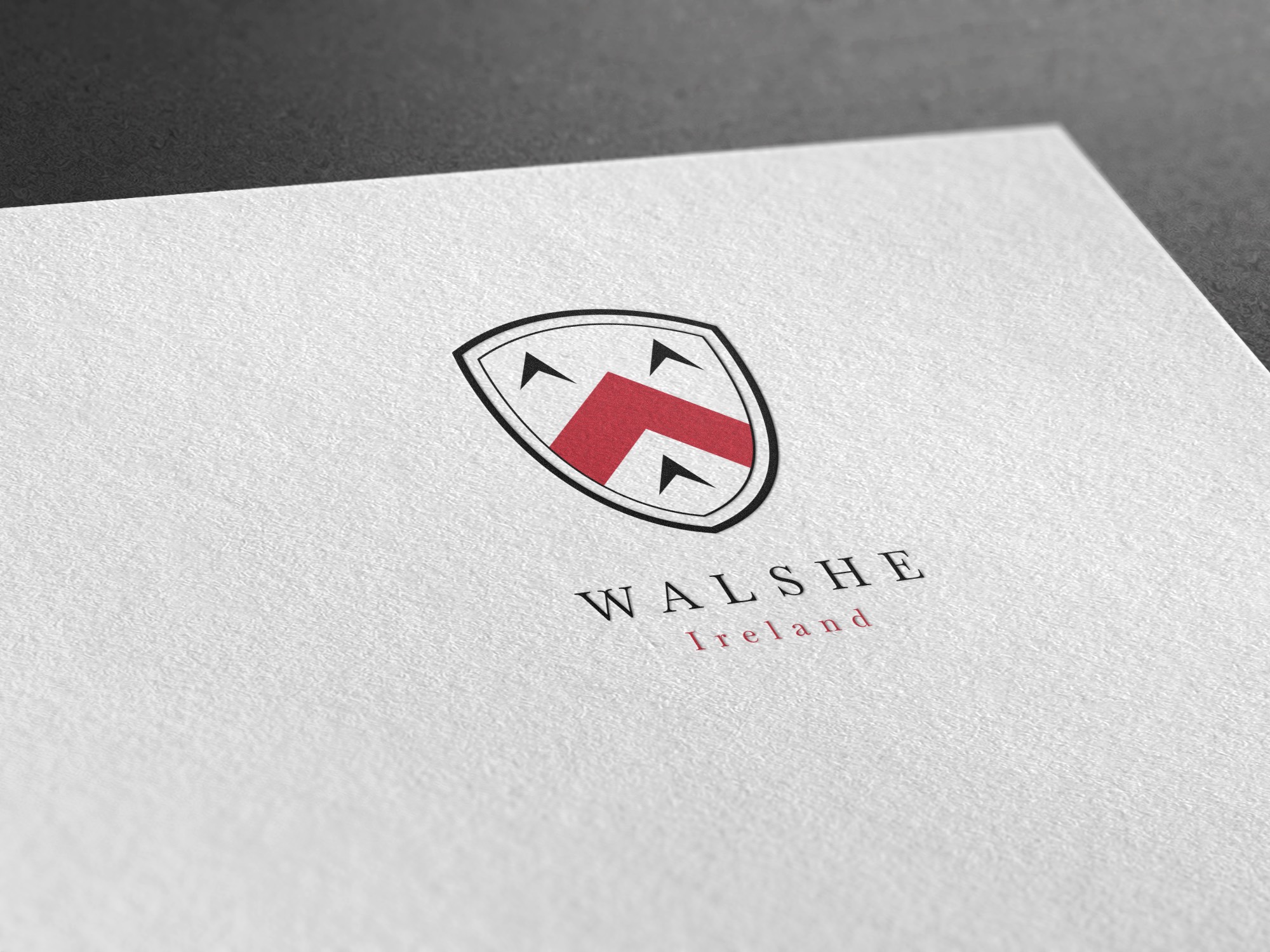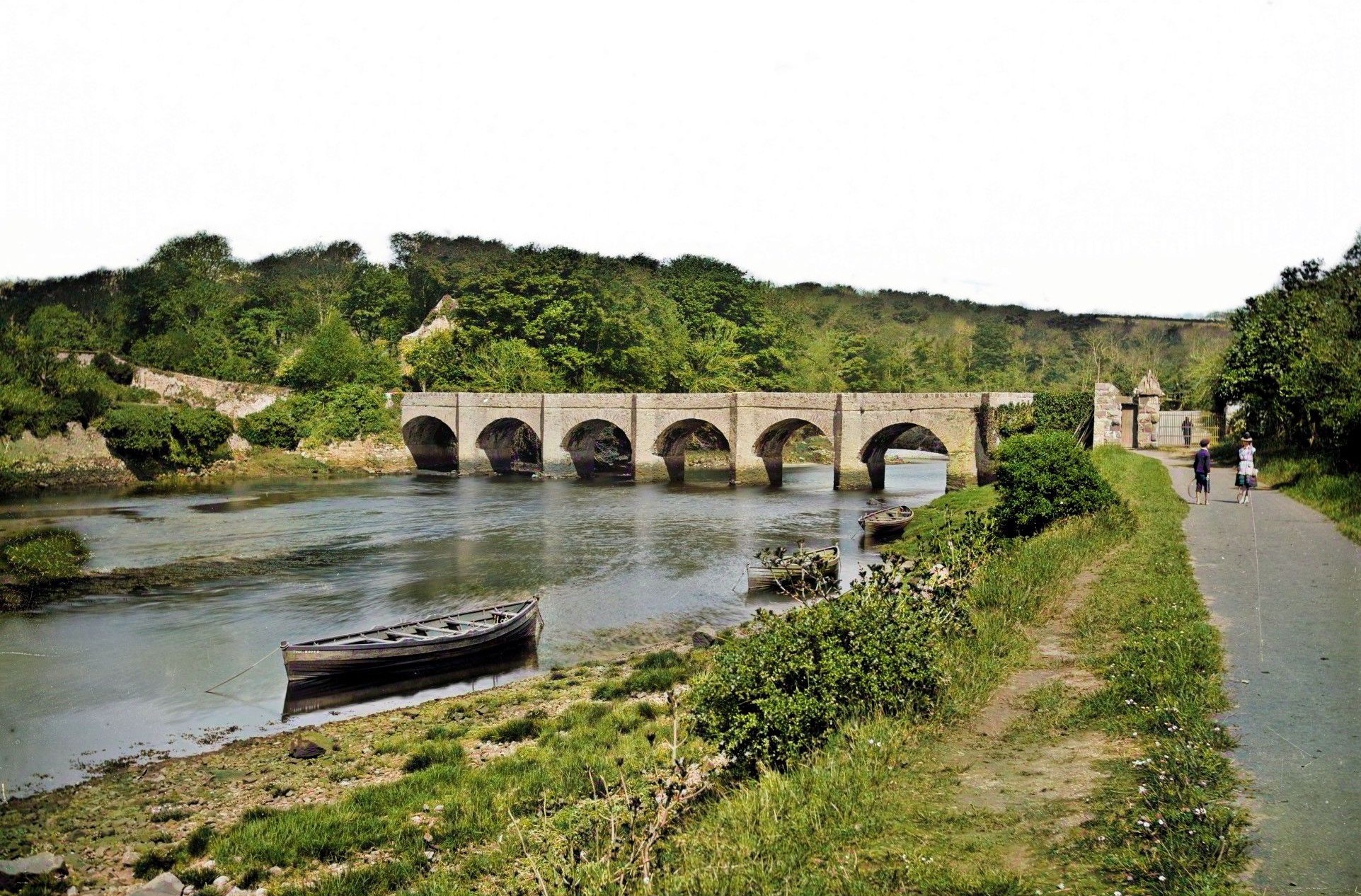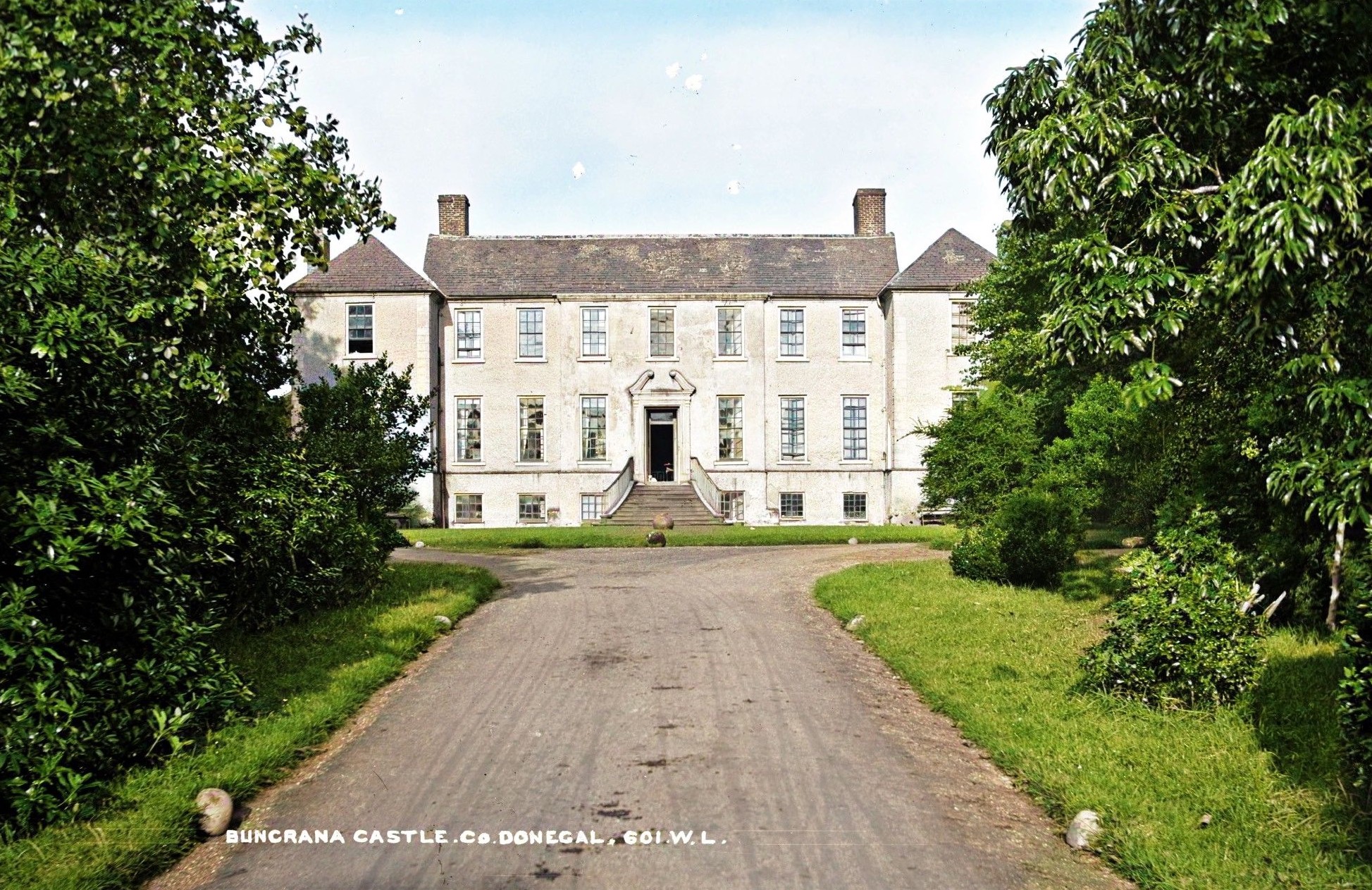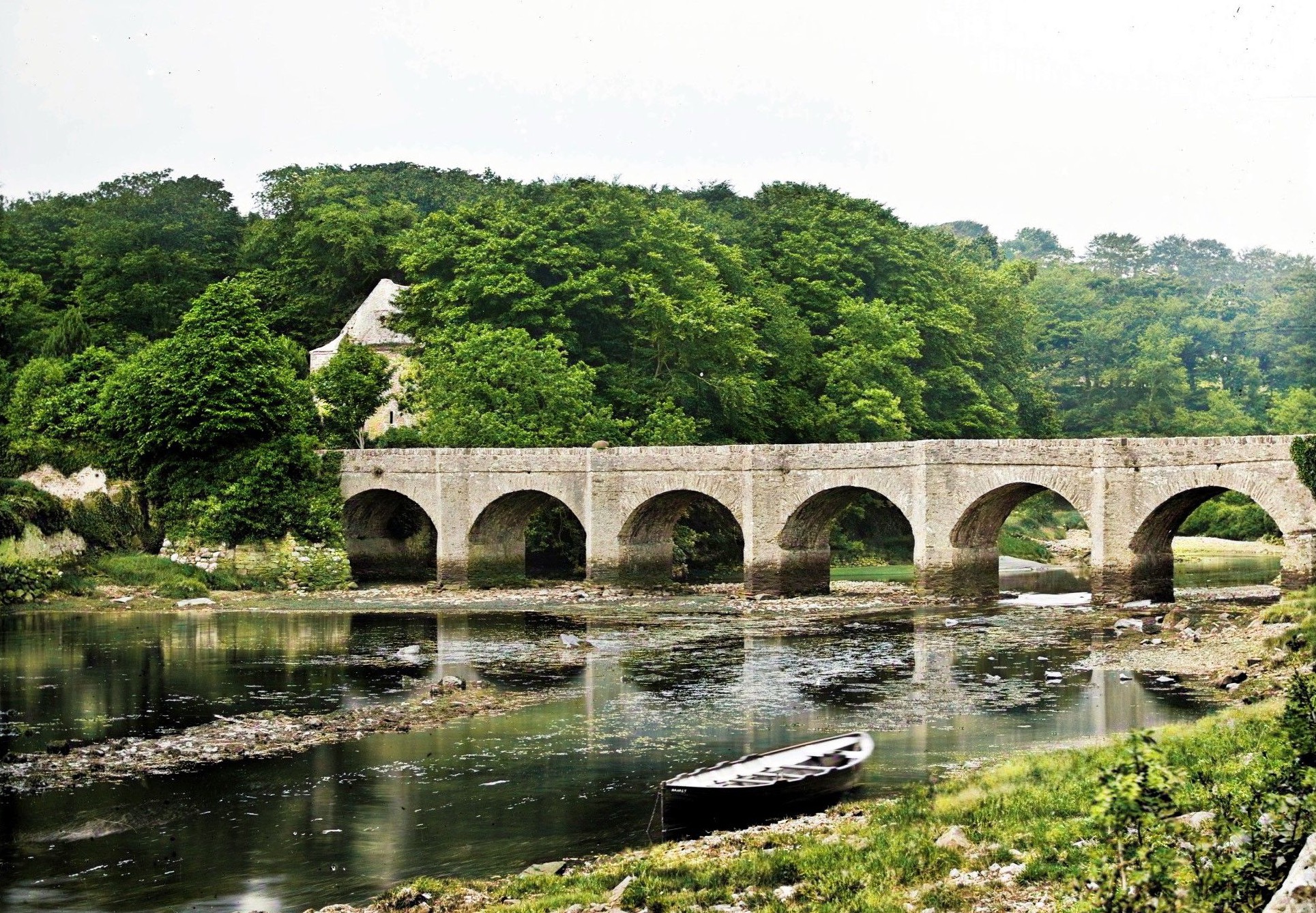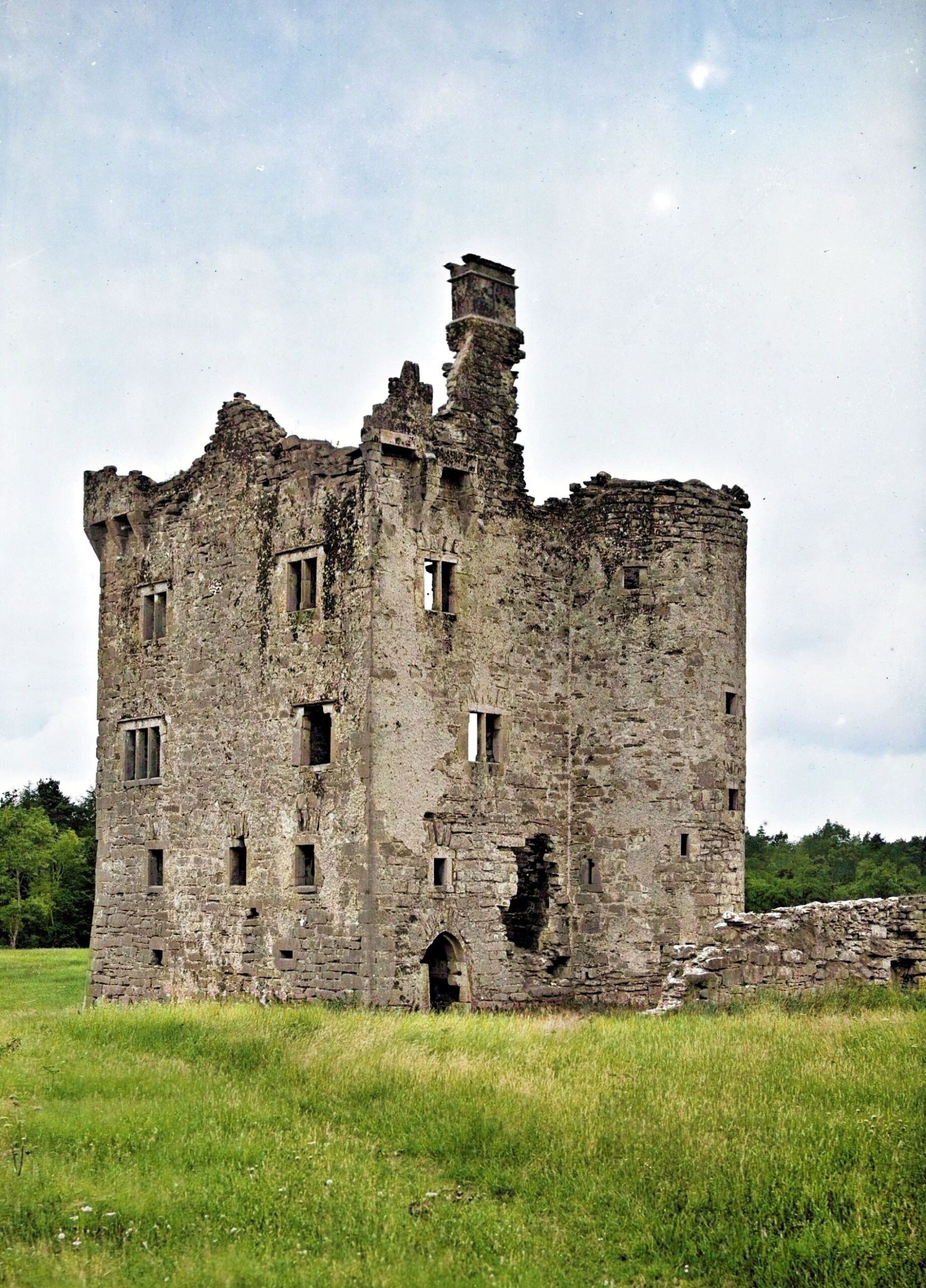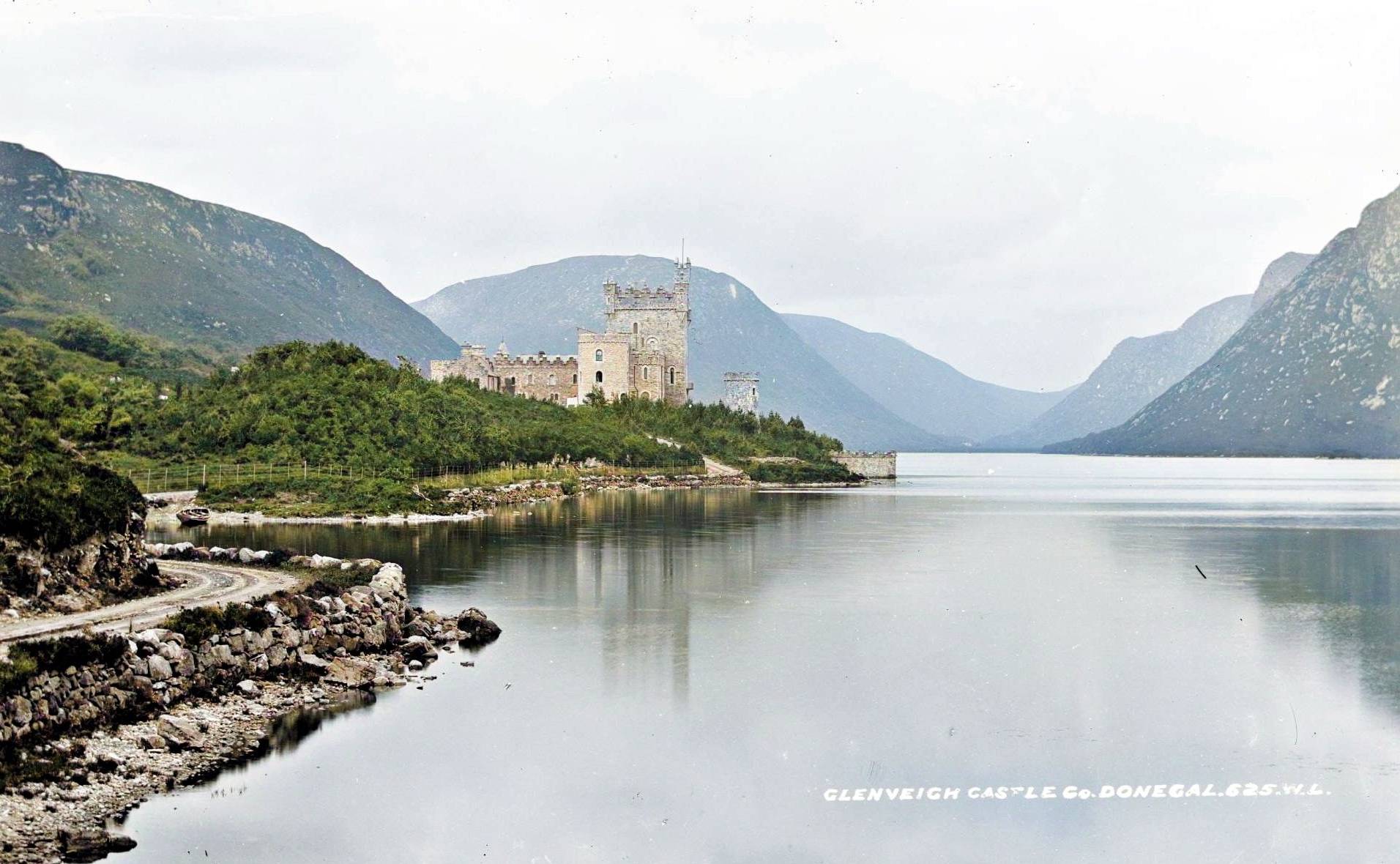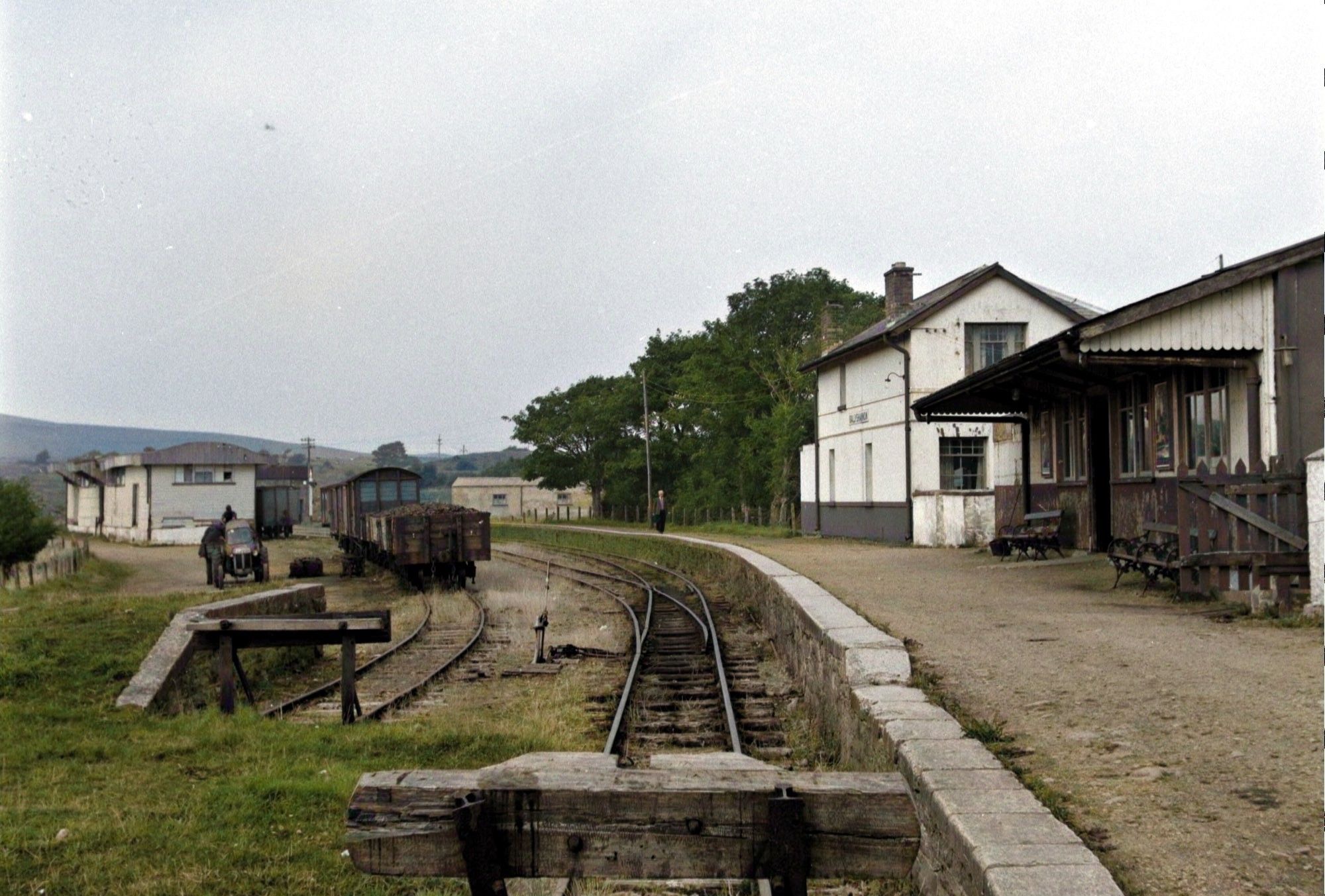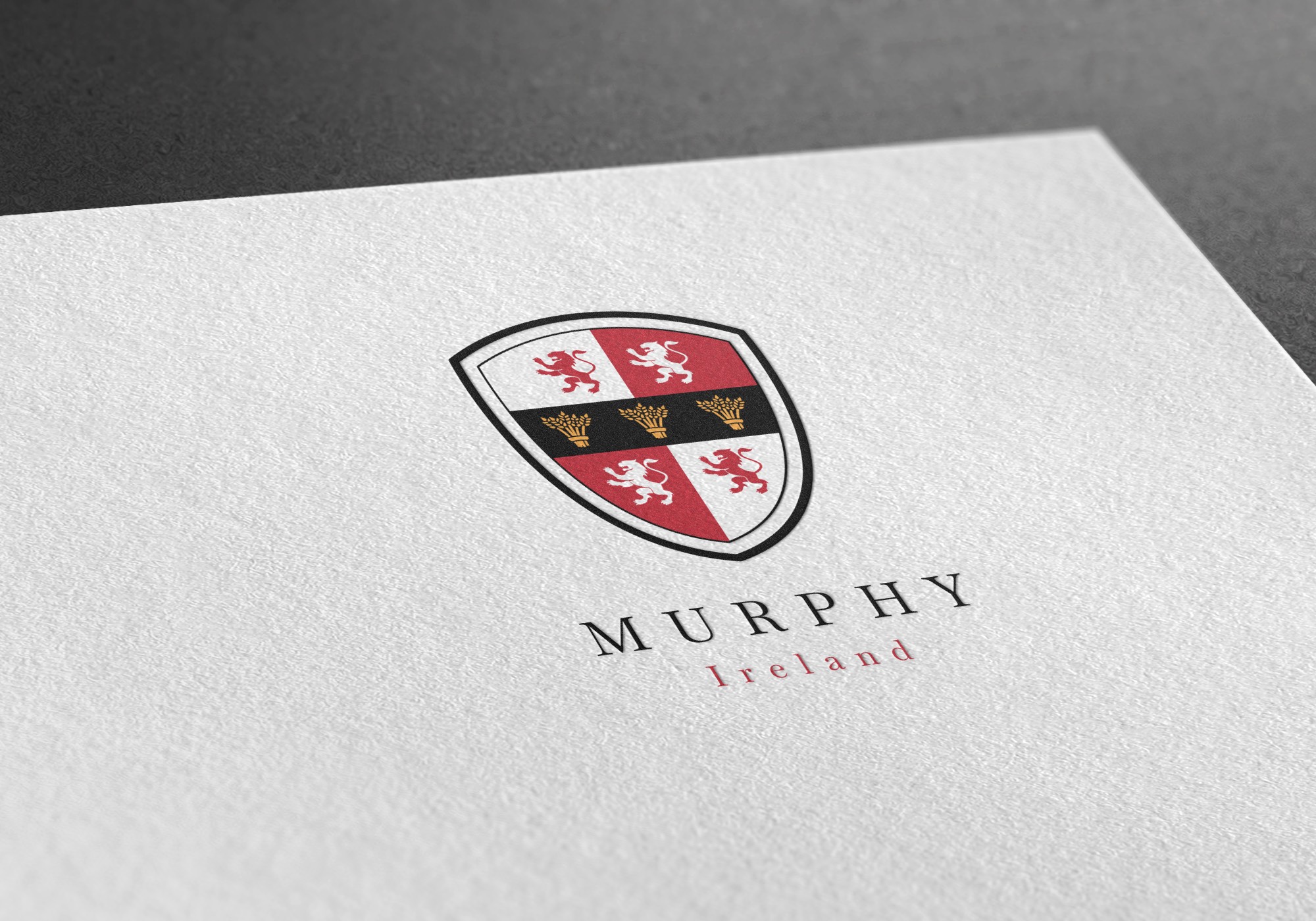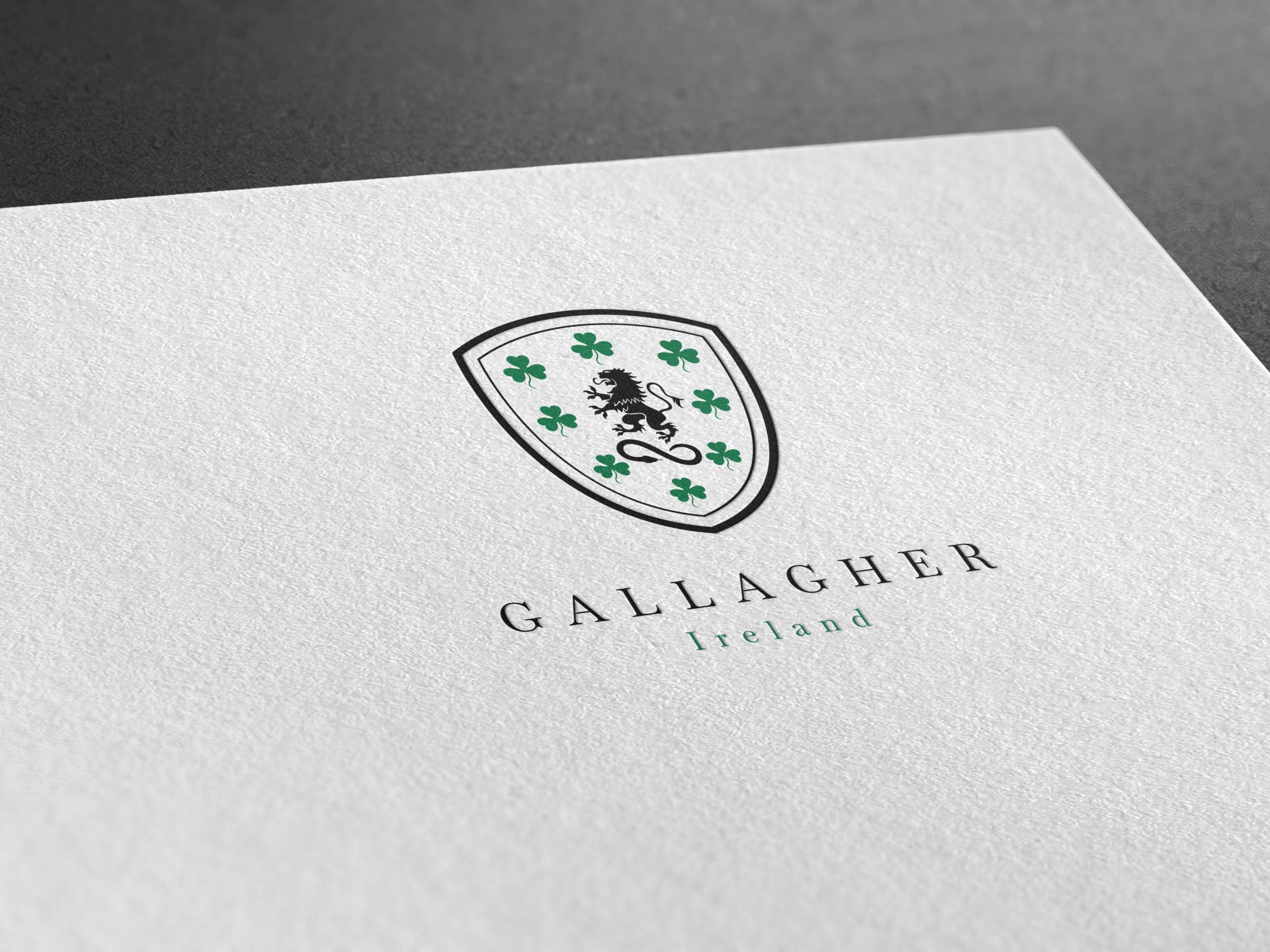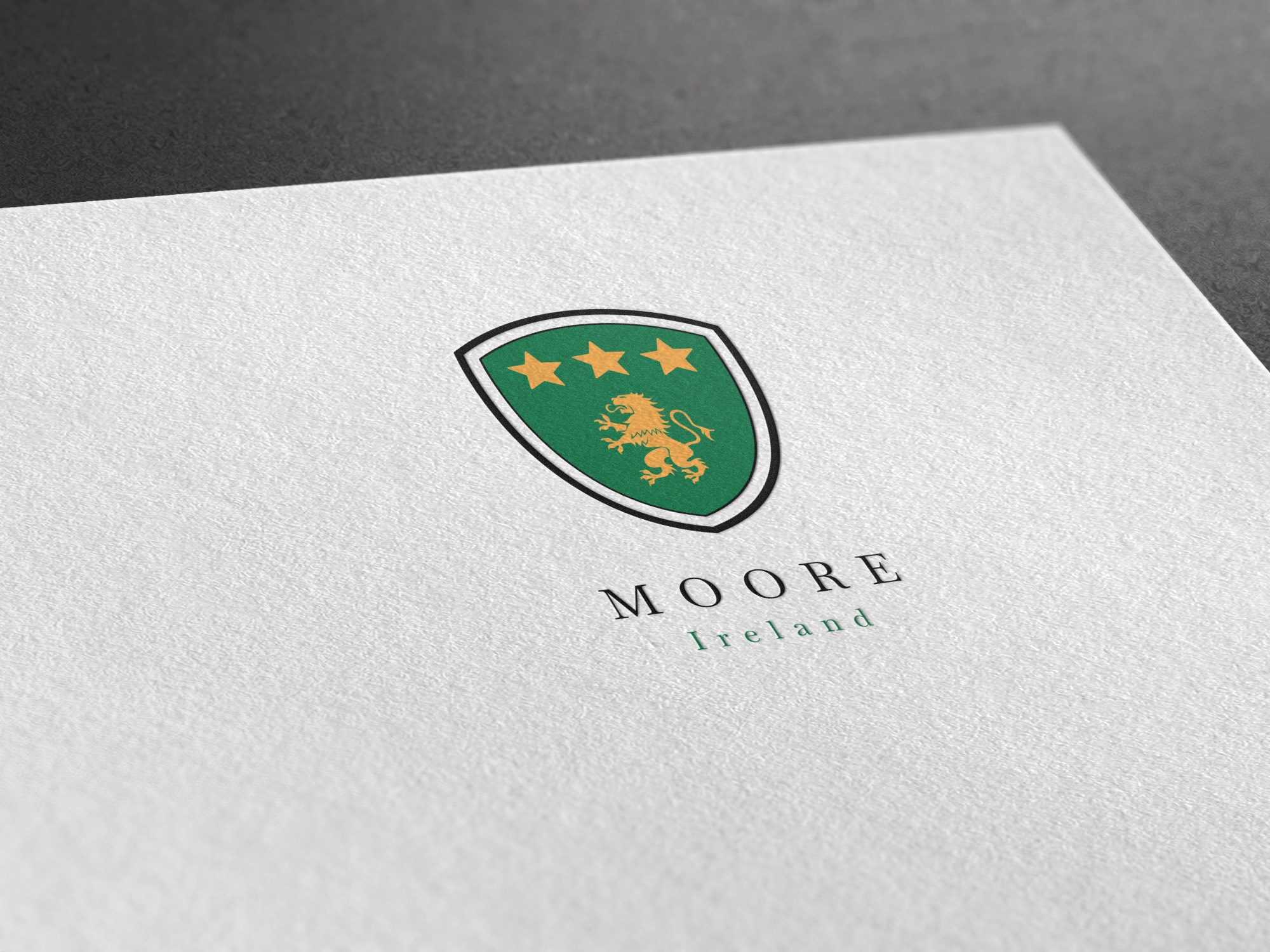Irish coats of arms and family crests are rich with history and symbolism, reflecting the cultural, familial, and historical narratives of Ireland. These emblems, used throughout centuries, serve as more than just decorative heraldic designs; they connect families to their ancestral pasts and communicate their values, achievements, and statuses. This...
O’Neal: family name history
The O'Neal surname, with its varied spellings including O'Neill, O'Neale, and O'Neil, is steeped in a rich tapestry of Irish history and tradition. As one of Ireland's most distinguished and ancient surnames, its origins and evolution provide a fascinating glimpse into Ireland's past, from its early medieval society through centuries...
Echos of Chaos: The Fomorians in Irish Mythology and Modern Culture
The Fomorians, or Fomóire, are a supernatural race in Irish mythology, often depicted as hostile and monstrous beings. These entities are considered one of the oldest and most powerful forces in the mythological history of Ireland, embodying the dangerous and chaotic elements of nature. They are central to numerous Irish...
McDermott’s Castle, Castle Island, Lough Key, Co. Roscommon
McDermott's Castle is located on Castle Island, within Lough Key, County Roscommon, Ireland. It is recognized as a protected national monument. The site has hosted fortifications since the 12th century, reflecting a long history of occupation and use. The current structure includes remnants from various periods, with significant modifications and...
The Royal City of Dublin Hospital: A Historical Overview
The Royal City of Dublin Hospital, initially known as the Baggot Street Hospital, stands as a monument to Dublin's medical and architectural heritage. Established in 1832, the hospital's foundation was laid by a group of pioneering doctors from the Royal College of Surgeons in Ireland. It marked the beginning of...
Rosserk Friary, Co. Mayo: A Historical Overview
Rosserk Friary, nestled along the serene banks of the River Moy near Ballina in County Mayo, Ireland, stands as a testament to the country's medieval ecclesiastical architecture and the Franciscan order's enduring legacy. Founded in the mid-15th century, this preserved Franciscan friary provides a window into the religious, educational, and...
Tory Island Tragedy: A Bloody Chapter from 1608
Prelude to Conflict The year 1608 marked a pivotal moment in Ireland, particularly after the influential Earls of Tyrone and Tyrconnell fled the country. This departure seemingly left the northern province vulnerable and compliant under King James I's rule. Dr. Russell's account, chronicled in the "Calendar of State Papers 1608-1610"...
Castle Grove House, Letterkenny, Co. Donegal
Castle Grove, nestled in the heart of County Donegal, stands as a testament to Ireland's rich historical tapestry. This near-original Georgian house, built in 1695, offers a glimpse into the architectural and familial legacies that have shaped the North West of Ireland. Beyond its structural beauty, Castle Grove embodies centuries...
Danu: Ireland’s Mother Goddess and the Eternal Flow of Celtic Mythology
Danu, often shrouded in the mists of Celtic mythology, remains an enigmatic figure with an elusive presence in ancient texts. Despite her scant direct mention in primary Irish mythological sources, Danu is recognized as a profoundly significant deity, embodying the essence of motherhood, fertility, and the ancestral lineage of the...
Nuada: Ireland’s God of Silver Limbs and Sovereign Resilience
In the rich tapestry of Irish mythology, few figures are as central or as emblematic as Nuada, the first king of the Tuatha Dé Danann, a mythical race of divine beings who once ruled Ireland. Known by his epithet, "Airgetlám," translating to "Silver Hand/Arm," Nuada's tale is one of triumph,...
Lugh: Ireland’s God of Arts, Crafts and War
In the rich tapestry of Irish mythology, few figures stand out as prominently as Lugh, a deity renowned for his multifaceted roles and profound impact on the ancient tales of Ireland. A member of the Tuatha Dé Danann, the pantheon of pre-Christian gods, Lugh is celebrated for his mastery over...
Dagda: Ireland’s Father God – A Legacy of Strength and Wisdom
The Dagda stands as a towering figure within Irish mythology, embodying a complex blend of strength, wisdom, and paternal care. As a pivotal member of the Tuatha Dé Danann, the race of deities that represents the quintessence of pre-Christian Gaelic gods, the Dagda's narrative weaves through the tapestry of Irish...
The Royal Bank of Ireland Building in Ballyshannon
The building that once housed the Royal Bank of Ireland, originally established as the Belfast Bank, stands as a significant architectural and historical landmark in Ballyshannon, Co. Donegal. Constructed in 1878, this building not only served the financial needs of the community but also became an integral part of the...
The Legacy of Hegarty’s Hotel, Letterkenny
In the heart of Letterkenny, where the bustling Market Centre Shopping Centre now stands, once stood Hegarty's Hotel, a cornerstone of history and culture in County Donegal. This storied establishment, which witnessed the ebbs and flows of Irish history from the early 19th century until its demolition, remains a poignant...
Rathmullan House: A Journey Through Time – From Georgian Origins to Modern Hospitality
Rathmullan House, nestled on the picturesque west coast of Lough Swilly in County Donegal, Ireland, is a testament to the rich tapestry of Irish history, architecture, and hospitality. Originating as a Georgian-style summer residence in the 1760s, it has evolved through centuries into a renowned boutique hotel, celebrated for its...
From Past to Present: The Evolution of Rockhill House, Letterkenny, Co. Donegal
Nestled in the verdant landscape of County Donegal, Rockhill House and Estate stands as a testament to Ireland's rich historical tapestry. This grand country house, with its roots stretching back to the 17th century, has witnessed the ebb and flow of Irish history, from the plantation era to modern times....
Walshe: family name history
The Walshe surname, with its variants Walsh, Welsh, and occasionally Welshe, stands as one of Ireland's most storied and numerous family names. Rooted deeply in the country’s Norman and Gaelic heritage, the name 'Walshe' encapsulates a complex history of migration, settlement, and cultural integration. This article explores the origins, spread,...
Echoes of Rebellion and Resilience: The Saga of O’Doherty’s Keep in Buncrana
O'Doherty's Keep: A Testament to History and Resilience The Norman Legacy and the O'Doherty Influence O'Doherty's Keep, located on the picturesque banks of the River Crana near Lough Swilly in Buncrana, County Donegal, stands as a historical monument that traces its origins back to the 14th century. Initially constructed by...
Buncrana Castle: A Journey Through Time and Heritage
Buncrana Castle, an emblem of Irish heritage, stands as a testament to the architectural ingenuity and historical depth of Ireland. Nestled on a peninsula off a peninsula, it offers a picturesque view across Lough Swilly towards the Atlantic Ocean. This castle, originally built in the early 18th century, not only...
St. Patrick: The Patron Saint of Ireland and His Legendary Exploits
St. Patrick, the patron saint of Ireland, is a figure shrouded in history, legend, and folklore. Born in the late 4th century, his life and deeds have been celebrated for over a millennium. His exploits have become integral to Irish culture, and his influence has spread far beyond the Emerald...
The History of Castle Bridge, Buncrana, Co. Donegal
Castle Bridge in Buncrana, County Donegal, is an architectural and historical landmark that has played a pivotal role in the town's development and history. This article provides a detailed overview of the bridge's origins, construction, and significance over the centuries. Origins and Construction Castle Bridge was constructed between 1716 and...
The History of McGrath Castle: Clan McGrath’s Legacy
Nestled on the picturesque northwest shore of Lower Lough Erne, McGrath Castle stands as a monument to the storied past of the Clan McGrath. Situated within the modern boundaries of County Donegal and merely a mile from the village of Pettigo, this Ulster castle encapsulates the rich history and architectural...
Shadows Over Glenveagh: The Derryveagh Evictions and Their Legacy
The serene beauty of Donegal’s Glenveagh National Park, with its majestic Glenveagh Castle, belies a tumultuous past marked by suffering, displacement, and struggle. This article delves into the dark history of the Derryveagh evictions, an episode of profound injustice and cruelty that remains a poignant chapter in Ireland's history. We...
Glenveagh Castle: A Historical Treasure in County Donegal, Ireland
Glenveagh Castle, a striking castellated mansion nestled in the heart of Glenveagh National Park in County Donegal, Ireland, stands as a monument of architectural grandeur and historical significance. Constructed in the late 19th century, this majestic estate captures the essence of Scottish baronial architecture, set against the rugged and picturesque...
The Historical Journey of Ballyshannon CDR Railway Station, Ireland
The Ballyshannon CDR Railway Station, once a bustling hub of activity and transportation in County Donegal, Ireland, boasts a rich and intricate history. From its inception to its eventual closure, the station played a pivotal role in shaping the local community and the broader Irish railway network. This comprehensive exploration...
Murphy: family name history
The surname Murphy is a patronymic name, which means it was formed from the given name of an ancestor. It is of Gaelic origin, derived from the Old Irish personal name "Murchadh," which is composed of two elements: "muir," meaning "sea," and "cadh," meaning "warrior." Therefore, the name can be...
Walsh: family name history
The Walsh surname is of Irish origin, stemming from the Gaelic name Breathnach, which means 'Welsh' or 'Breton.' It was used to denote those of Welsh origin who came to Ireland during and after the Anglo-Norman invasions in the late 12th century. Etymology and Meaning The name Walsh essentially means...
Gallagher: family name history
The surname Gallagher is of Irish origin, descending from the Gaelic Ó Gallchobhair, where 'Ó' denotes 'descendant of', and 'Gallchobhair' can be translated to 'foreign helper'. Etymology and Meaning The surname Gallagher, as derived from its Gaelic roots, is believed to mean 'foreign helper', indicating that the original bearers of...
Moore: family name history
The Moore surname is of Irish origin, deriving from the Gaelic "O Mordha," where "O" signifies "descendant of," and "Mordha" translates to "proud" or "noble." Etymology and Meaning Moore, from its Gaelic origins, can be translated as "the proud" or "the noble one," indicating its bearers were of a respected...
Kennedy: family name history
The Kennedy surname, known in Irish as Ó Ceanéidigh or Ó Cinnéide, is one of the most distinguished names in Ireland. Its roots trace back to the ancient Gaelic tribes of the Emerald Isle. Etymology and Meaning The name Kennedy is derived from two Gaelic words: "ceann" meaning head, and...


